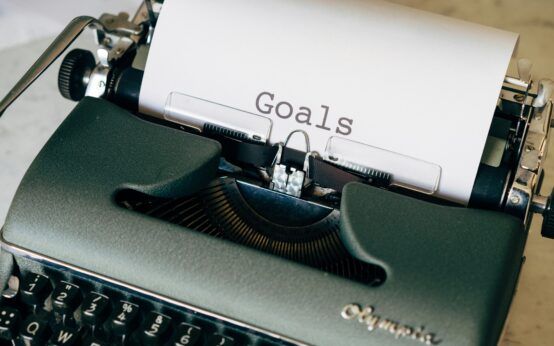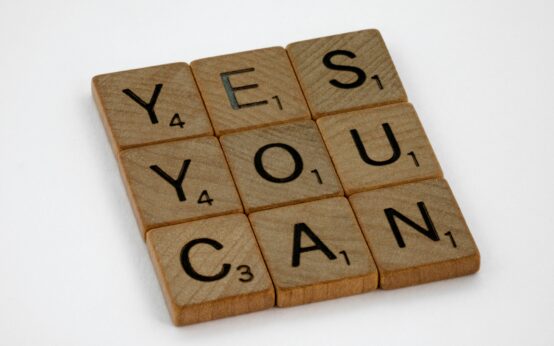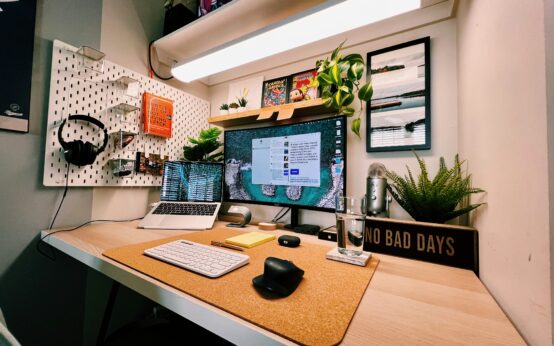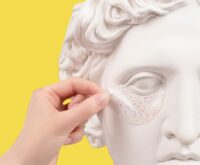Have you ever wondered how to turn your dreams into tangible goals that guide your personal growth? One creative and inspiring way to do this is by creating a vision board. This powerful tool helps you visualize your aspirations, making them feel more achievable and real. In the process, you’ll find that a vision board can be an essential part of your journey toward personal development.

What is a Vision Board?
A vision board is a collage of images, words, and other materials that represent the goals and dreams you wish to achieve in your life. Often displayed in a place where you can see it daily, a vision board serves as a visual reminder of what you’re working towards. By focusing on these visual elements, you can reinforce positive thinking and motivation.
Creating a vision board isn’t just about putting pictures and words on a board; it’s an intentional act of defining your aspirations. It reflects who you are, what you want, and the steps you need to take to get there. In essence, it’s about turning your dreams into a visual roadmap.
Why a Vision Board for Personal Development?
You might be curious about how a vision board specifically aids in personal development. The answer lies in its ability to clarify your goals and keep you anchored to them. When you see your vision board daily, it acts as a constant motivator, pushing you to take action towards your aspirations.
Vision boards help you hone in on what truly matters, identifying what’s worth pursuing and what aligns with your core values. This focus is crucial in personal development, where clarity and purpose play significant roles in progress. By continually engaging with your board, you ensure that your development journey is consistent and intentional.
The Benefits of Using a Vision Board
Creating a vision board comes with numerous benefits that can positively impact your personal growth journey. Below are some of the key advantages:
Clarification of Goals
One of the primary benefits of a vision board is the clarity it provides. By taking the time to think about and select images and words for your board, you define what you want out of life. This clarity is the first step in creating an actionable path to achieve your dreams.
Motivation and Inspiration
When you face challenges or feel unmotivated, a vision board serves as a source of inspiration. It reminds you of your ‘why’—the reasons behind your efforts—and reignites your passion to keep moving forward.
Enhanced Focus
Keeping your goals at the forefront of your mind helps improve your focus. By consistently reminding yourself of your aspirations, you can prioritize your time and energy towards actions that support your objectives.
Positive Reinforcement
Vision boards promote positive thinking by visualizing your future successes. They help train your subconscious mind to recognize opportunities that align with your goals, fostering a proactive and forward-thinking mindset.
Stress Reduction
Visualizing your goals helps in reducing stress and anxiety by providing a sense of direction and purpose. When life feels chaotic, your vision board acts as a grounding point to remind you of your long-term objectives.
Steps to Creating a Vision Board for Personal Development
Creating a vision board involves a thoughtful process where you explore your values, dreams, and goals. Here’s a step-by-step guide to help you create your personalized vision board:
Step 1: Reflect on Your Goals and Dreams
Start by taking time to introspect on what you truly desire in life. Consider different areas such as your career, relationships, health, and personal growth. Ask yourself questions like:
- What do I want to achieve in the next year or five years?
- What brings me the most happiness and fulfillment?
- What hobbies or activities am I passionate about?
Jot these thoughts down as they will guide you in selecting the right elements for your board.
Step 2: Gather Your Materials
Your vision board can be physical or digital, depending on your preference. For a physical board, you’ll need:
- A large piece of poster board or cork board
- Scissors and glue or thumbtacks
- Magazines, newspapers, printed images, or photographs
- Markers or pens for writing your own words or affirmations
If you prefer a digital board, tools like Canva or Pinterest can be incredibly useful for creating and organizing your vision.
Step 3: Select Images and Words
Choose images and words that resonate with your goals and aspirations. Visuals should evoke emotions and reflect your desired future. These can be:
- Pictures from magazines or printed photographs
- Words or quotes that inspire you
- Affirmations that empower and uplift
Arrange these on your board in a way that feels right for you, ensuring they are easily viewable.
Step 4: Assemble Your Vision Board
Once you’ve gathered your images and words, it’s time to assemble them on your board. There’s no right or wrong way to do this—let your creativity guide you. You might prefer a more organized layout, or you may want a more freeform, artistic approach. The important thing is that your board speaks to you and captures your vision.
Step 5: Place Your Vision Board Where You’ll See It
The effectiveness of a vision board lies in its visibility. Place it somewhere you’re likely to see it consistently, such as your bedroom, workspace, or even on your fridge. The more you interact with your board, the more it internalizes your goals.

Tips for Maximizing Your Vision Board’s Potential
Creating a vibrant and meaningful vision board is just the beginning. Here are some tips to ensure you’re maximizing its potential:
Engage with Your Board Daily
Spend a few minutes each day reflecting on your vision board. Visualize achieving your goals and embrace the positive feelings these images and words evoke. This practice strengthens your commitment to your journey.
Update Your Board Regularly
Life is dynamic, and so are your goals. Don’t hesitate to update your vision board as your aspirations evolve. This ensures it remains relevant and aligned with your current path and objectives.
Set SMART Goals
While your board represents your desired future, it’s essential to break these into actionable steps. Ensure your goals are Specific, Measurable, Achievable, Relevant, and Time-bound (SMART). This way, you’re not just dreaming but actively working towards your vision.
| SMART Goal Criteria | Description |
|---|---|
| Specific | Clear and well-defined |
| Measurable | Able to track progress |
| Achievable | Realistic and attainable |
| Relevant | Aligned with your values and long-term objectives |
| Time-bound | Have a deadline or time frame |
Involve Your Senses
Engaging multiple senses can further enhance the impact of your vision board. Consider adding physical elements like textured materials or adding scent by placing your board near aromatherapy oils or candles. These additional sensory experiences can deepen the emotional connection to your goals.
Share Your Vision
Discuss your vision board with someone you trust. Sharing your goals with others can bring new insights and accountability, enhancing your motivation to achieve them. Make sure the people you choose are supportive and encouraging.
Address Possible Challenges
While the process of creating and using a vision board is largely positive, you might face a few challenges. Here’s how you can tackle them:
Overwhelm by Choices
Selecting images and words can be overwhelming given the vast options. Focus on what’s truly important to you and don’t rush. It’s more meaningful to choose elements that deeply resonate rather than adding too much.
Loss of Interest Over Time
The novelty of a vision board can wear off. Revitalize your board by periodically adding new elements or revisiting your initial objectives. Refreshing your board keeps your motivation alive.
Doubts About Effectiveness
You might question whether a vision board is making any difference. Remember, it’s a supportive tool, meant to complement consistent action. Pair it with practical steps toward your goals and rely on it for inspiration and focus.

Examples of Personal Development Goals for Your Vision Board
To inspire your journey, consider adding elements related to these common areas of personal development:
Career Growth
- Achieving a promotion or a new position
- Starting a new business or project
- Learning new skills or certifications
Health and Wellness
- Establishing a regular fitness routine
- Embracing nutritious eating habits
- Practicing mindfulness or meditation
Relationships
- Building stronger family or friendships
- Engaging in community or social activities
- Improving communication and emotional skills
Personal Fulfillment
- Exploring creative outlets like painting or writing
- Traveling to new places or experiencing diverse cultures
- Volunteering or giving back to your community
Conclusion: Your Personal Roadmap
A vision board is more than a collage of dreams; it’s a dynamic and personal tool that brings clarity, motivation, and direction to your personal development journey. By creating and regularly engaging with your vision board, you ensure your dreams are alive and well on their way to becoming reality. Embrace this visual guide as a part of your life, and watch how it propels you toward living the life you envision.

 How To Cultivate A Growth Mindset For Personal Development
How To Cultivate A Growth Mindset For Personal Development  How To Set And Achieve Meaningful Goals
How To Set And Achieve Meaningful Goals  Top Strategies For Boosting Your Self-Confidence
Top Strategies For Boosting Your Self-Confidence  How To Overcome Procrastination And Stay Motivated
How To Overcome Procrastination And Stay Motivated  How To Stay Motivated To Exercise Regularly
How To Stay Motivated To Exercise Regularly  How To Create A Skincare Routine For Oily Skin
How To Create A Skincare Routine For Oily Skin  The Best Ingredients For Anti-Aging Skincare
The Best Ingredients For Anti-Aging Skincare  10 Skincare Myths That Are Wrecking Your Glow—Debunked by Experts
10 Skincare Myths That Are Wrecking Your Glow—Debunked by Experts  Natural Skincare 101: Everything you Need to Know
Natural Skincare 101: Everything you Need to Know  The Ultimate Guide To Sunscreen: What You Need To Know
The Ultimate Guide To Sunscreen: What You Need To Know  Best Anti-Acne Products: A Comprehensive Buyers Guide
Best Anti-Acne Products: A Comprehensive Buyers Guide